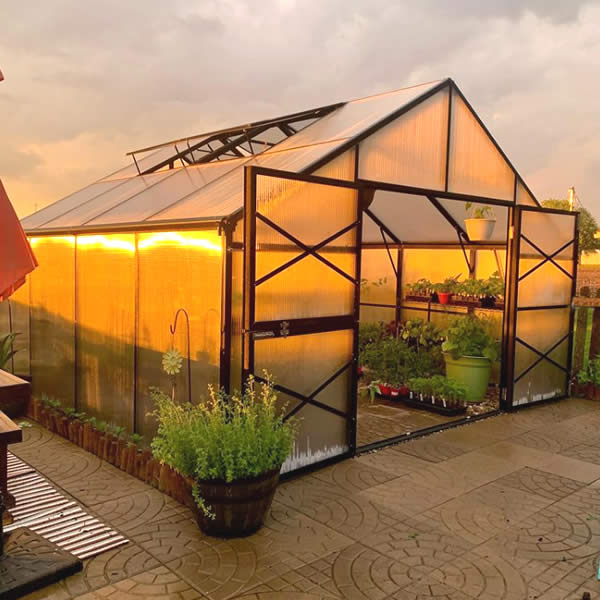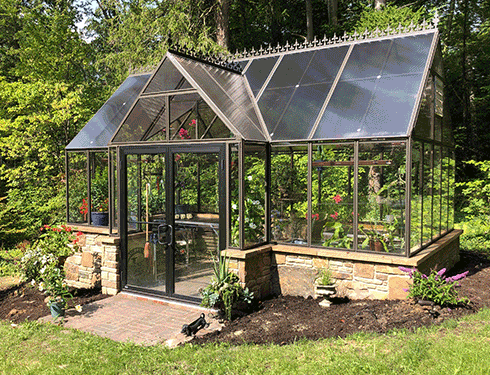Structure Desires, Growing Environment-friendly: Monarch Greenhouse Builder Utah at Your Service
Wiki Article
The Future of Greenhouses: Technologies in Sustainable Agriculture
Are you curious concerning the future of greenhouses and how they are changing lasting farming? From advanced climate control systems to vertical farming strategies, water-efficient irrigation approaches, renewable power integration, and wise information analytics, these developments are transforming the method we grow our food.Advanced Environment Control Systems
To attain ideal expanding conditions, you can count on the improvements in greenhouses with sophisticated climate control systems. These systems have actually changed the method we grow crops, providing a regulated environment that contributes to plant development. With these innovative systems, you can currently adjust temperature, humidity, light levels, and also carbon dioxide focus to produce the perfect problems for your plants to prosper.Among the vital functions of these sophisticated climate control systems is their capacity to control temperature. By utilizing sensing units and automated controls, the greenhouse can readjust the temperature level based upon the particular requirements of the plants. This guarantees that they are never revealed to extreme heat or cool, which can be destructive to their growth.
Humidity control is another crucial aspect of these systems. By keeping the optimal moisture levels, you can prevent concerns such as mold, mildew, and condition from impacting your plants. These systems can additionally regulate the quantity of light that reaches the plants, guaranteeing that they obtain the optimal amount for photosynthesis.
Moreover, progressed climate control systems can even manipulate carbon dioxide concentrations. By increasing the degrees of CO2 in the greenhouse, you can enhance plant growth and efficiency. This is particularly useful in locations with reduced all-natural carbon dioxide levels.
Upright Farming Methods
One vital upright farming method is using piled growing systems. Monarch Greenhouse Sheds Utah. These systems involve setting up plants in multiple layers, vertically piled on top of each other. By using upright area, farmers can optimize their crop return without calling for extra land. Stacked growing systems are generally used in metropolitan locations where room is restricted.One prominent technique is referred to as upright hydroponics, where plants are grown in nutrient-rich water without soil. This technique is very efficient as it decreases water usage by up to 90% contrasted to standard farming approaches. Additionally, because the plants are grown inside, they are secured from insects and diseases, lowering the need for chemicals.
One more strategy is aeroponics, which includes putting on hold the plant roots in a mist or air environment. This method enables optimum nutrient absorption and oxygenation, resulting in faster development and higher yields. Aeroponics also makes use of less water than typical farming and can be carried out in upright systems, making it a preferred selection for vertical farming.
Water-efficient Watering Methods
Making the most of water conservation is essential when it concerns carrying out water-efficient irrigation techniques in lasting agriculture. With worldwide water scarcity ending up being a pushing concern, it is essential to establish cutting-edge strategies that optimize water use in greenhouse operations.One encouraging approach is drip watering, which delivers water straight to the plant origins, reducing waste and evaporation. By utilizing a network of tubes with tiny emitters, water is used gradually and precisely, making certain that plants obtain the necessary wetness without excess runoff.
One more efficient strategy is the usage of dirt wetness sensors. These gadgets determine the wetness content in the dirt and provide real-time data to farmers. By checking the dirt's wetness levels, farmers can accurately identify when and just how much water to use, protecting against over-irrigation.
In addition, the execution of rain harvesting systems is gaining popularity in greenhouse agriculture. Gathering rainwater from rooftops and keeping it in containers permits farmers to use this natural deposit for watering purposes, minimizing dependence on typical water resources.
Finally, the fostering of automated watering systems can substantially enhance water effectiveness. These systems utilize sensors to identify soil moisture degrees and climate condition, adjusting irrigation schedules appropriately. By enhancing water use based on real plant demands, these systems can decrease water waste and promote sustainable farming methods.
Renewable Resource Integration
Renewable power assimilation in greenhouses provides numerous benefits, consisting of lowered running prices and decreased reliance on non-renewable power sources. The produced power can after that be utilized to run various procedures within the greenhouse, such as ventilation, heating, and lights systems. These turbines harness wind power and convert it right into electrical energy, which can be used to supplement the power requirements of the greenhouse.Smart Information Analytics and Automation
To boost the effectiveness of your greenhouse operations and optimize source utilization, take into consideration executing wise data analytics Monarch Greenhouse Utah and automation. Smart information analytics includes accumulating and analyzing information from numerous sensing units and gadgets within your greenhouse.
This can consist of automating the control of lights, air flow, irrigation systems, and nutrient shipment. By automating these procedures, you can ensure that your plants obtain the appropriate conditions and nutrients at the right time, without the demand for continuous manual treatment.
Moreover, smart information analytics and automation can interact synergistically. The information gathered by sensors can be used to notify computerized systems, enabling them to make real-time modifications based on the present conditions. This combination of information analytics and automation can cause more specific and reliable resource appropriation, ultimately leading to greater yields and much better plant quality.
Final Thought
To conclude, the future of greenhouses in lasting farming looks appealing. With sophisticated environment control systems, vertical farming methods, water-efficient irrigation methods, and renewable power assimilation, greenhouses are ending up being extra reliable and ecologically pleasant. Additionally, using clever data analytics and automation even more boosts productivity and reduces waste. These advancements are leading the way for a much more effective and sustainable farming market, making certain a greener and healthier future for all.
By enhancing water use based on actual plant requirements, these systems can decrease water waste and advertise sustainable farming methods.

Report this wiki page